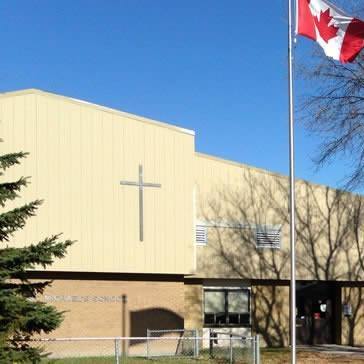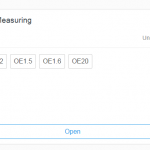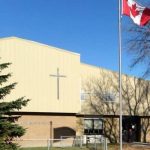With the Interim Full-Day Kindergarten document just arriving on the scene, it is a great way to rethink, reframe and rework what pedagogical documentation might look like in a full-day kindergarten classroom and in two instances another language (French). Through the use of Sesame, the team will work on collecting, sharing and analyzing information regarding the children in their care. Time will be spent assessing the most effective use of technology, time and people resources to drive the documentation which will drive the teaching.
(Please note that when the term “teacher” is used, it is assumed that the Early Childhood Educators will also be included in this project.)
Team Members
Meghan Bougeois (French immersion teacher)/Lindy Friend (ECE)
Northwest Catholic District School Board
Cheri Tolton-Whatley (teacher)/Nicole Cheetham (ECE)
The Northwest Catholic District School Board
Deborah Jean (French immersion teacher)/Mandy Armstrong (ECE)
The Northwest Catholic District School Board
Chayla Gardiman (teacher)/Stephanie Mishibinijima (teacher)/Holly Strain (ECE)
The Northwest Catholic District School Board
Lisa Cousineau (TELT Contact)
The Northwest Catholic District School Board
Team Photo

Professional Learning Goals
A point in the journey has been reached with:
- “Our hope for using Sesame was to ensure that we were documenting and reporting on student learning appropriately. We also hoped that it would ease our frustrations when documenting (i.e., taking pictures) as we were able to attach curriculum expectations directly to activities or individual photos (i.e., Snaps).” Meghan Bourgeois, French immersion kindergarten teacher
- More proficient/efficient use of the online portfolio
- More proficient with the use of the iPad as a preferred form of capturing documentation
- Learned how to pedagogically document through knowing and naming the learning
- “What I was hoping to get was an organized, accessible and easy way to document growth for report cards and to share learning with parents.” Deborah Jean, French immersion kindergarten teacher
Activities and Resources
“When we lift moments out of the flow of time, we can hold them still, study them, and consider a thoughtful, caring response. We discover what we did not yet know how to see.” Dr. Carol Anne Wien
Each teacher was given an iPad for the team to share. The team started early in the year with an online video conference with the Sesame team learning how to get started with Sesame. At that point, all of the teams were able to spend some time navigating the program to figure out how it could be used in the classroom. At the next team meeting, it was decided that for the progress report they would focus on, but not limit themselves to, documenting self-regulation and well-being within the online portfolio. They spent time taking apart the four frames, discussing how Sesame might be used to capture the evidence for, as/of learning. For the first and second term, there was a shift to documenting across all frames in the format of the “learning story” that the new Communication of Learning would need. The Kindergarten document and the Growing Success Document Kindergarten addendum were widely used as well as the Capacity Learning Series paper, Pedagogical Documentation Revisited. This was a first attempt at the Communication of Learning, which is agreed is a journey and not a destination.
Parents were brought into the journey and accounts were set up for them to view the portfolios. At the parent/teacher meetings, the portfolios were used as springboards to the conversation.
Unexpected Challenges
The unexpected challenges fell mainly in the area of the technology:
- The need to have an iPad attached to the adult at all times as well as ensuring it is charged and has enough space on it to capture evidence of learning
- Only one iPad for each team was difficult
- “When I would take a snap of student learning and forget to attach it to a specific activity, I would then have to use a desktop in order to attach it to the specific expectation, which I then felt Sesame required extra time.” Stephanie Mishibinijima, kindergarten teacher
- At first, it felt like an add-on and teachers felt they couldn’t find time to do it
- Digging deep and unfolding the learning in the capture of evidence proved to be more difficult than expected
- The shift in what the ministry was asking with the new Communication of Learning and how to align Sesame with it
Enhancing Student Learning and Development
Pedagogical documentation is what drives the kindergarten program. “Documenting the evidence of learning is the most important aspect of assessment in kindergarten and is, indeed, an integral part of all assessment approaches.” Growing Success – The Kindergarten Addendum, 2016, p. 8. If the teachers are more comfortable with the curriculum, seeing and capturing the learning as it is happening, being able to put the videos and snaps up on the smartboard for the children to discuss, question and respond to, letting it drive the next decisions made about the child’s learning, then it is safe to assume that student learning will be enhanced. As the year progressed, the students started to document their own learning – using the iPads to record conversations and take pictures. This piece of self-assessment also helps to drive student learning, as well as the parents seeing a live representation of where their child is at.
Sharing
At the beginning of the year, the sharing was among the teachers in St. Michael’s school. Those who had more expertise with technology shared their time/knowledge to get the other teachers on board.
The basics about the app were shared at a K-3 leadership conference in Thunder Bay. The context of the share was a round table discussion about long-range plans in kindergarten and all kinds of documentation ideas were brought forward. It was shared that as a team at St. Michael’s school, the kindergarten teachers decided to put the expectations into the four frames for ease of attaching the expectations to the documentation.
This learning will also be shared on a page set up for kindergarten teachers within our virtual learning environment (fall 2017). It is hoped that other schools within our board share their most effective ways to document, as it is important to note that Sesame is just the tool. How it is utilized is what matters.
It is also necessary to share the learning with our administration as Sesame (to keep it secure) is a paid online portfolio and there is a need/want for another year with Sesame.
Project Evaluation
It would be impossible to decide if after only one year this project was a success. With the onset of the new four frames and the Communication of Learning, it is very clear that pedagogical documentation is necessary. The question still remains as to what the most effective way of capturing it is. “Sesame could be very useful – it is difficult to know which approach is best when documenting, as the type of activity may lend itself more to another form of capturing the learning. Each team has their effective ways of consolidating their documentation.” Cheri Tolton-Whatley, kindergarten teacher. Looking back at the original goals, they were partly met in that the teachers all worked collaboratively to learn how to document with the iPad and were in contact with parents. That being said, having more parents communication options available would be helpful as opposed to using more than one application to communicate with/evaluate students. Push notifications would be helpful for parents as well. “I feel that if parents were given updates on what their child was doing immediately, they would be more apt to use it and thus use it to drive conversations at home about what learning took place in the classroom.” Meghan Bourgeois, French immersion kindergarten teacher.
The work needs to be continued in the next school year with the teachers digging deeper to really understand what pedagogical documentation means in terms of the learner. This year the goal was to develop habits of documenting. In general, the teachers reported a tendency to document too much in an unfocused way and to be overwhelmed with a large amount of just photos. “I did like the quick reference to the new curriculum document. I think if I used it one more year with my now clearer understanding of inquiry, I would do a better job of using Sesame for its intended purpose. It does require quite a bit of time to use. I was using it at the beginning of the year quite a bit, but I was posting way too many pictures without a clear purpose.” Deborah Jean, French immersion kindergarten teacher.
Resources Used
The Kindergarten Program 2016 – This document sets out what four- and five-year-olds across the province will learn in Ontario’s two-year kindergarten program and how educators will help children learn through play and inquiry
Growing Success – The Kindergarten Addendum
Assessment, Evaluation, and Reporting in Ontario Schools
This document is also available as a PDF. (7.16 MB)
2016
http://www.edu.gov.on.ca/eng/policyfunding/growingSuccessAddendum.html#gs1
Sesame – a living, visual record of student competencies
Pedagogical Documentation Revisited: Looking at Assessment and Learning in New Ways
http://www.edu.gov.on.ca/eng/literacynumeracy/inspire/research/CBS_PedagogicalDocument.pdf
Resources Created
These resources will open in your browser in a new tab, or be downloaded to your computer.




